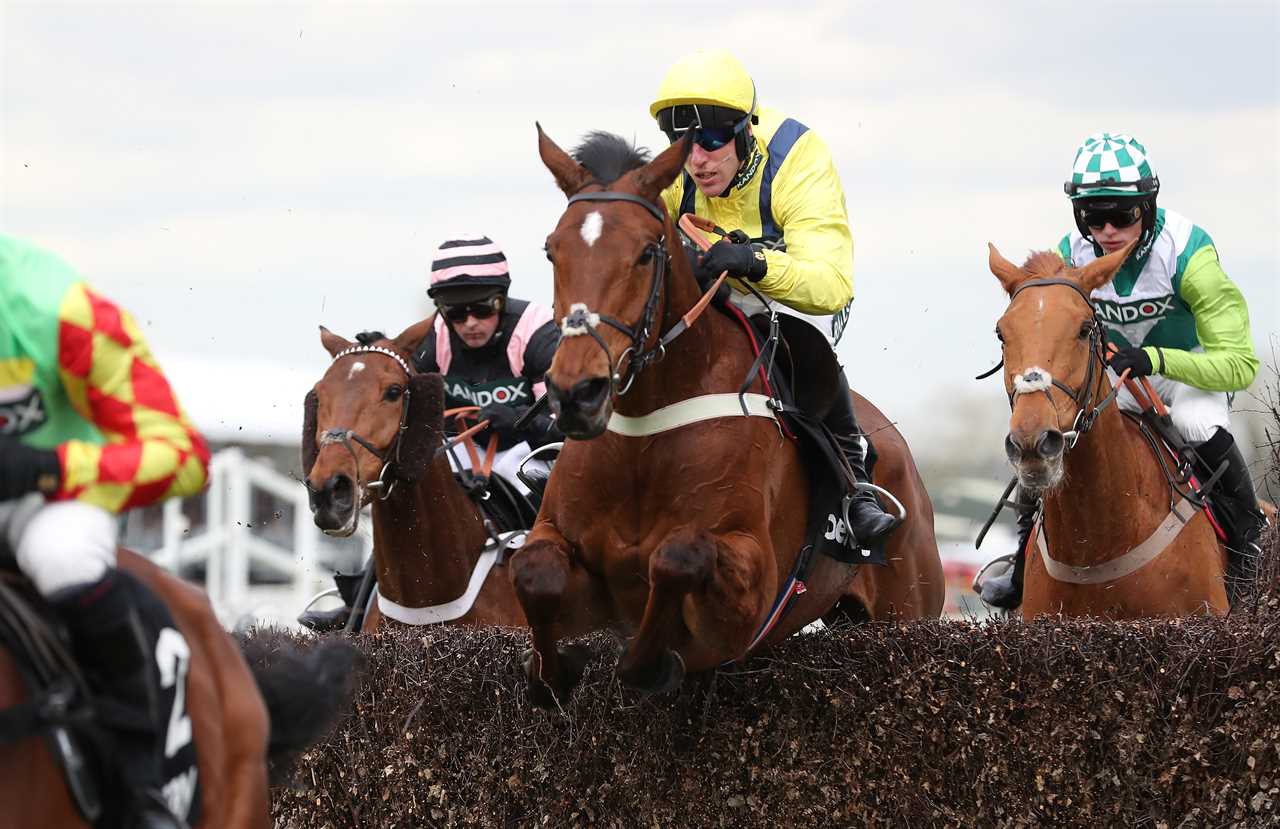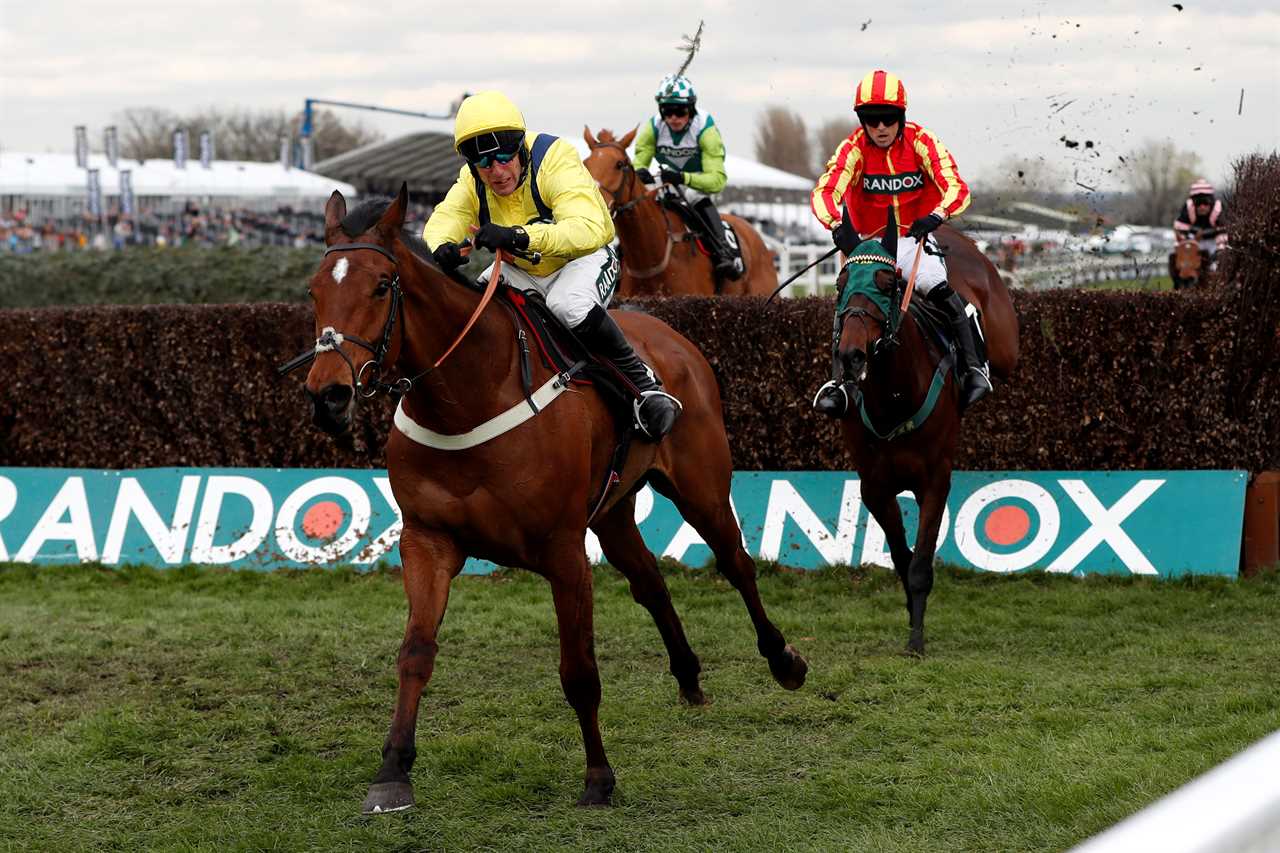
A Storied Career on the Tracks
Lostintranslation, the horse that captured the hearts of racing enthusiasts, has died at the age of 13. Known for his impressive performances, he secured over £420,000 in earnings from six victories out of 28 races. His consistency and determination made him a standout competitor in the racing community.
Highlighting the Year 2019
The year 2019 was particularly remarkable for Lostintranslation. Trained by Joe Tizzard, the son of Flemensfirth, he achieved significant milestones that year. On New Year’s Day, he triumphed at Cheltenham, showcasing his exceptional skill. Later, he clinched the Mildmay Novices’ Chase at the Aintree Grand National Festival, further cementing his status as a top contender. His winning streak continued with a victory at the Betfair Chase at Haydock, just 20 days after winning a Listed race at Carlisle.
Memorable Performances and Retirement
In 2020, Lostintranslation narrowly missed out on the Gold Cup, finishing third behind Al Boum Photo. He also competed in the 2022 Grand National, finishing well behind the winner Noble Yeats despite starting at 50-1 odds under jockey Harry Cobden. After a few more races, he was retired in February 2023 following a handicap chase at Warwick where he was pulled up. Retirement came after just over two years, marking the end of a celebrated racing career.
Beloved by Fans and Punters
Lostintranslation was more than just a racehorse; he was a fan favourite known for his stylish and exuberant jumping, as well as his unwavering will to win. Punters admired his consistency and the flair he brought to each race, making him a staple at major spring festivals. His retirement was met with sadness, as fans had grown attached to his remarkable presence on the tracks.

Heartfelt Tributes and Remembrance
Tributes have poured in from all corners of the racing community and beyond. Trainer Joe Tizzard described Lostintranslation as a “fantastic creature,” expressing deep sorrow over his passing. Fans shared their memories and emotions on social media, highlighting the special bond they had with the horse. One punter reminisced, “Horse of a Lifetime. Made some great friends due to him and owned by some amazing people. Took me to plenty of big days that I could never have imagined. Memories I will never forget. RIP Lost.”
Another fan added, “Lostintranslation was a real fan favourite! My thoughts are with his owners and the whole team at Venn Farm. He deserved a long, happy and healthy retirement and it truly is awful to lose him at 13, just over two years into his retirement.” A heartfelt message on X read, “I don’t think my heart can take much more of this. RIP Lostintranslation, fly high you beautiful boy, your courage and determination will never be forgotten.”
Legacy of a Racing Icon
Lostintranslation leaves behind a legacy of memorable races and endearing moments that will be cherished by fans and the racing community alike. His contributions to the sport and the joy he brought to those who watched him compete will not be forgotten. As the racing world mourns his loss, Lostintranslation’s spirit remains a testament to his remarkable journey on the tracks.
Remember to Gamble Responsibly
- Establishes time and monetary limits before playing
- Only gambles with money they can afford to lose
- Never chases their losses
- Doesn’t gamble if they’re upset, angry or depressed
- Gamcare – www.gamcare.org.uk
- Gamble Aware – www.gambleaware.org
Find our detailed guide on responsible gambling practices here.
Frequently Asked Questions
Does a racehorse need a certain type of shoe?
Racing plates are thinner and lighter than normal horseshoes. These plates minimize weight while providing the necessary traction for the racetrack. A farrier skilled in working with racehorses will carefully select and fit these shoes to match each horse's hoof conformation and the specific racing surface they will be running on.
How can I prepare my horse for racing?
A racehorse's conditioning is a process that involves a combination of slow, long distance work for stamina as well as shorter, faster workouts for speed. A carefully designed regimen of exercise must gradually strengthen the horse's cardiovascular, muscular, and skeletal system. This is done to mimic the stress of racing, without injuring or overstressing it.
What's the best kind of diet for racing horses to follow?
A racehorse diet must be of the highest quality and balanced precisely to meet their energetic requirements for training and racing. The diet is usually a mixture of high-quality hay, grains like oats and barley, as well as commercially prepared racehorse feed. A diet that is rich in essential vitamins, minerals and nutrients will support the horse's health and help them perform at their best.
How critical is the horse's pedigree in racing success?
While pedigree can be an indicator of potential, it is not the sole determinant of a racehorse's success. A horse's lineage may suggest an inherited aptitude for speed or endurance, but training, health, and temperament are also influential factors. Training can enhance a horse’s natural abilities, and allow it to perform better than horses with more impressive pedigrees.
What is the initial step to training a racing horse?
The first phase of training a racing horse involves "breaking", where the horse gets used to wearing a saddle and bridle as well as the weight of the rider. During these early sessions, patience and gentle handling are paramount to ensure the horse learns to be comfortable with human interaction and the equipment it will wear throughout its racing career.
When should a horse begin training for racing?
Horses may begin their basic training as yearlings but they will usually begin more rigorous racing training and conditioning at around two years. This is when their bodies are mature enough to handle the stresses of the track while still being young and adaptable for the learning process. The exact timing depends on the horse's maturity and temperament.
Statistics
- Racehorse mortality rates during racing have been observed to be between 1.5 to 2 deaths per thousand starts, depending on the racing jurisdiction.
- Studies suggest that proper early training can reduce the risk of musculoskeletal injuries in racehorses by up to 50%.
- An extensive survey indicated that over 90% of racehorse trainers utilize swimming as a low-impact exercise in their conditioning routines.
- The majority of racehorses in training are subject to an exercise regimen that includes being ridden six days a week.
- Statistically, less than 1% of thoroughbred foals born each year will go on to win a stakes race.
- Approximately 70% of a racehorse's diet consists of forage, with the remainder made up of grains and supplements to meet their high-calorie needs.
External Links
How To
How to monitor and maintain racehorse health throughout training
In order to maintain a racehorse’s health, regular health checks are essential. Implement a routine of daily visual inspections, paying close attention to the horse's gait, behavior, and appetite. Schedule regular veterinary checkups, which should include dental and shoe care. Track heart rate data after exercise to detect deviations. Treat minor concerns as soon as possible to avoid them becoming serious.
 CricketBoxingFormula 1GolfHorse RacingPremier LeagueTennisPrivacy PolicyTerms And Conditions
CricketBoxingFormula 1GolfHorse RacingPremier LeagueTennisPrivacy PolicyTerms And Conditions
